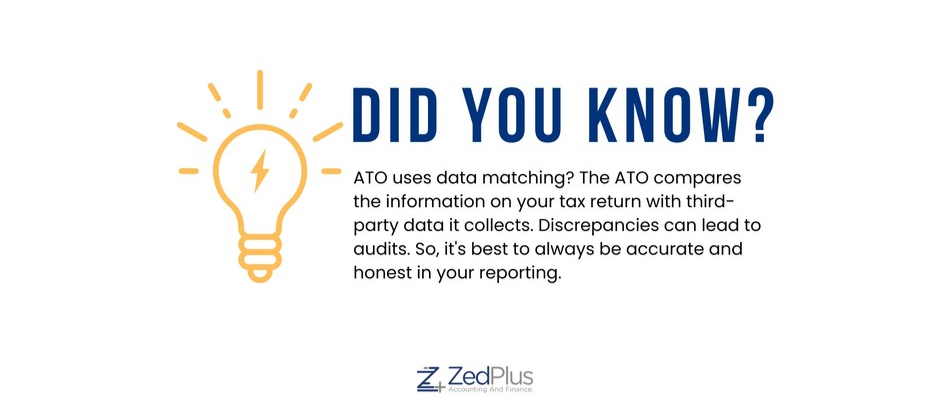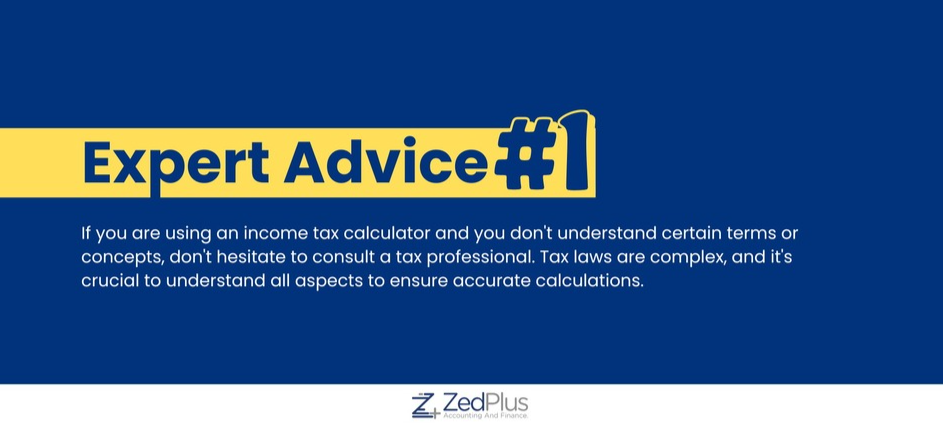Simplify your tax return with online income tax return calculator
Understanding and filing income tax returns can feel like an uphill battle for many, fraught with complexities, nuances, and an inherent fear of making costly mistakes. This can deter individuals from maximising their benefits and availing themselves of the numerous tax-saving opportunities.
This blog post aims to change this perception by introducing you to the power and simplicity of an income tax calculator. Designed to streamline and demystify the process, an income tax calculator can be your key to efficient and effective tax management.
By the end of this post, we hope you'll see tax return filing not as a formidable task but as an easily navigable process, where accuracy meets simplicity. Let's dive into how an income tax calculator can simplify your tax returns and enhance your financial savvy.
Key takeaways
- An income tax calculator simplifies tax return filing and maximizes tax-saving opportunities.
- The Australian income tax system is based on the concept of taxable income, with different rules for various business structures.
- Australian income tax rates are progressive, increasing as income rises.
- Accurate income tax estimations are essential for regulatory compliance and effective financial planning,
- When choosing an online tax calculator, it's crucial to opt for one that is user-friendly, and adaptable to the unique needs of your business.
Understanding the Australian income tax system
The Australian income tax system, a well-structured framework, governs the tax responsibilities of businesses. This system revolves around the concept of taxable income, calculated as the total assessable income of a business minus any deductions. Assessable income encompasses all earnings from regular business activities and additional income such as capital gains. Businesses can claim deductions for amounts incurred in operating their business. An annual income tax return is a requirement for every business.
The Australian Tax Office (ATO) offers comprehensive guidelines for different types of businesses to lodge their income tax returns. For example, sole traders need to lodge returns even if their income falls below the tax-free threshold. In their tax return, sole traders report business income after deducting claimable business expenses, along with other income such as salary, wages, dividends, and rental income. The ATO then calculates the tax liability or refund.
Partnerships lodge a tax return detailing the partnership's net income. Individual partners include their share of the partnership net income or loss and any other assessable income in their individual tax returns. The partnership does not pay income tax; instead, tax is paid by each partner on their share of the net partnership income.
Trusts operate similarly, with the trustee lodging a trust tax return and each trust beneficiary lodging their own return. The trust reports its net income or loss, while beneficiaries report any income received from the trust along with any other assessable income.
Companies, as separate legal entities, lodge a company tax return. This return includes the company's taxable income, tax offsets and credits, PAYG instalments, and the amount of tax payable or refundable. The income of a company is distinct from the personal income of its owners or directors.
Lodging timelines for tax returns vary. Small companies typically must lodge and pay by 28th February. However, if there are outstanding returns from previous years, the due date is 31st October. For assistance with tax obligations and deadlines, consider engaging registered tax agents like ZedPlus.
Australian income tax calculator rates
The Australian income tax system is progressive, with rates increasing as an individual's income rises. According to the Australian Taxation Office, as of 2023, the tax rate for income up to $18,200 is nil. Here are tax rates applicable to the income above $18,200:
- Earnings between $18,201 and $45,000 are taxed at a rate of 19 cents for each extra dollar over $18,200.
- For incomes between $45,001 and $120,000, the rate rises to $5,092 plus 32.5 cents for each additional dollar over $45,000.
- If your income falls between $120,001 and $180,000, the tax is $29,467 plus 37 cents for each extra dollar over $120,000.
- Any income exceeding $180,000 attracts a rate of $51,667 plus 45 cents for each additional dollar over $180,000.
Please note that the income tax rates mentioned above do not encompass the 2% Medicare levy and apply solely to individuals classified as Australian citizens for tax purposes.
Our online tax return calculator uses these rates to provide reasonable estimates of your tax obligations. This ensures you are well-prepared and informed about your tax returns.
The importance of estimating income tax calculations
Income tax estimation is a cornerstone of any business's financial health and regulatory compliance. Incorrect estimation could lead to underpayment or overpayment of taxes, both of which can have serious consequences. Underpayment can result in penalties and potential legal issues, while overpayment can unnecessarily tie up funds that could be better utilized for business growth and investment.

The downfalls of traditional tax calculation methods
Traditional tax calculation methods, while time-tested, come with their own set of challenges. They often involve labor-intensive manual computations, which can be time-consuming. These methods require a deep understanding of complex tax laws and meticulous management of numerous documents, which can be overwhelming, especially for small businesses.
Furthermore, the risk of human error is high in manual computations, and mistakes can lead to significant financial and legal consequences. As a result, businesses are increasingly turning to tax computation tools, which offer a more efficient and accurate way to estimate tax liabilities.
What is an income tax calculator?
An income tax calculator is an online tool designed to simplify your tax computation process. It works by taking in essential financial details such as your income, deductions, and tax credits. By processing this data, the calculator gives you an accurate estimate of your payable tax or potential refund. It also removes the requirement for manual calculations and offers a convenient, stress-free method to manage your tax responsibilities effectively.
Benefits of using an income tax calculator
Income tax calculators have become an indispensable tool for small businesses, offering a range of benefits that streamline the tax calculation process and enhance financial management. Here are five key advantages of using an income tax calculator:
Good for budgeting:
One of the primary benefits of using an income tax calculator is its ability to provide accurate tax calculations. When you enter your financial details, the calculator instantly figures out how much tax you need to pay, following the latest tax laws and rates. This saves time and guarantees accuracy, making sure your calculations are up-to-date with the current rules, and helps you steer clear of any possible penalties or fines.
Identifying tax deductions and credits:
The calculator assists in identifying deductions and credits that your business might be eligible for. It presents a list of qualified expenses, like office supplies, travel costs, and home office expenses, which can be claimed as deductions. This empowers small business owners to optimize their tax savings by ensuring they take advantage of all potential tax deductions.
Planning for tax payments:
By accurately calculating your taxes and identifying deductions and credits, you can plan for future tax payments more effectively. The calculator allows you to enter different scenarios to see how they will affect your taxes, making it easier to plan ahead for any changes in income or expenses that may impact your tax liability.
Easy accessibility and convenience:
The calculator is available online, offering you the convenience of access at any time, from anywhere. You're not restricted to business hours to calculate your taxes. With just a few clicks on your computer or mobile device, you can access the tool and get precise results instantly.

Choosing the right online tax calculator for your small business
There's a multitude of tax calculators available in the digital world. However, not all offer the same level of accuracy, user-friendliness, and adaptability to your unique needs. It's essential to choose a calculator that fulfills these criteria to ensure optimal tax management.
ZedPlus' online tax calculator is a precise and user-friendly tool tailored specifically to cater to the requirements of our clients. You simply need to enter some basic information, like your income, deductions, and residency status, and the calculator will provide you with accurate estimates of your tax refund or payable amount in no time. It's a convenient way to get a clear picture of your tax situation and plan your finances accordingly.
In addition to the online tax return calculator, ZedPlus also provides an exceptional online tax return service. Our team of experienced professionals make sure that our clients get back the maximum refund possible when they file their returns. We offer a tailored approach and personalized service, identifying every entitlement and deduction an individual is eligible for.
We stay up-to-date with the latest tax amendments from the Australian Taxation Office (ATO), ensuring accurate and reliable advice for tax filings. This comprehensive service, when used in conjunction with our tax refund calculator, offers a holistic solution for clients, making tax management seamless and efficient. We are committed to providing our clients with the most current tax information to optimize their tax refunds and comply with the latest regulations from the ATO.
Simplifying tax returns: A step-by-step process to using an online tax return calculator by ZedPlus
Here are a few steps to effectively use the online tax return calculator designed by ZedPlus experts:
Step 1: Access the calculator:
Visit the ZedPlus official website and navigate to the income tax calculator page. Alternatively, you can directly access the calculator by clicking on the button “ Click here to start calculating” below.
Step 2: Enter your residency status:
Select your residential status from the options provided - Residents, Foreign residents, or Holiday makers.
Step 3: Choose the financial year:
Select the financial year for which you are calculating the tax.
Step 4: Input your income:
Enter your various sources of income, including salary income, investment property income, capital gain, and other income.
Step 5: Enter your deductions:
Input your deductions such as clothing & laundry expenses, self-education expenses, travel expenses, and other expenses.
Step 6: Review the estimated tax:
The calculator will provide an estimate of your tax payable, your taxable income, and your income after tax & medicare levy. It also provides your marginal tax rate.
Remember, the information provided by our tax calculator is for estimation purposes only and should not replace professional tax advice. For a more accurate and personalised tax calculation, consider using our online tax return service.
Final note
Understanding and managing your tax obligations is crucial for financial success. Our income tax calculator serves as a helpful starting point, providing valuable insights and informed decision-making for our clients. However, for a comprehensive understanding of their unique tax situation, professional advice is essential.
At ZedPlus, we offer a powerful combination of technology and expertise to guide our clients through the complexities of tax returns, ensuring accuracy, and compliance. If you need further assistance, don't hesitate to reach out to us.









